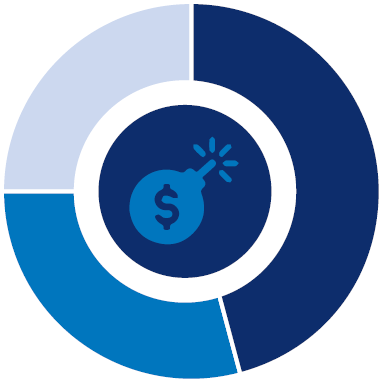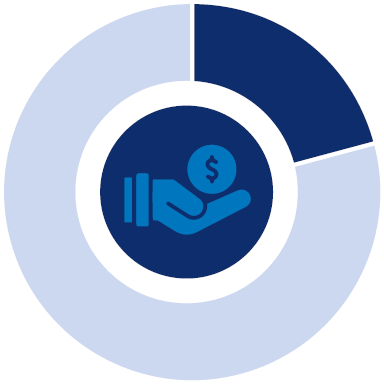Tearing Down the Barriers to Prosperity

What Pennsylvanians Say
about Poverty
and Prosperity
across the
Commonwealth
Key Findings

More than half of low-income Pennsylvanians work. Sixty-three percent of respondents were employed, self-employed, or unemployed and looking for work. Of the employed, 62 percent were employed full time.
>>The most common reason for not holding or seeking a job is caring for a loved one or child (43 percent).

Respondents listed debt (46 percent) and taxes (29 percent) as the two most common barriers to financial security. The average respondent pays $4,575 per year in taxes, about $380 per month.

Poverty in Pennsylvania occurs in urban and rural settings. In fact, four of the five counties with the highest poverty rates are rural.
>>Philadelphia has the highest concentration of poverty at nearly 23 percent, while in Forest County it is 19.6 percent. The statewide poverty rate is 12.1 percent.

Twenty-one percent of surveyed individuals knew they were eligible for government programs yet chose not to enroll.
Download the full report here.
How More Economic Freedom Can Reduce Poverty and Boost Prosperity in Pennsylvania
- Economic freedom, specifically lower government spending, strongly and consistently offers both increases in prosperity and reductions in poverty.
- States that gained economic freedom from 2010 to 2019 tend to have lower levels of poverty and higher levels of prosperity.
- In Pennsylvania specifically, a one-point improvement in the Economic Freedom of North America (EFNA) Index score over five years is associated with a 2.08 percentage point increase in employment and a $2,338 increase in per capita income.
- In Pennsylvania, a one-point improvement in the EFNA Index score over five years is associated with a decrease in poverty rates resulting in up to 176,970 fewer Pennsylvanians in poverty.